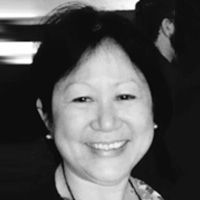Auto parts makers push revival of People’s Car Program

July 31, 2006 | 12:00am
The Motor Vehicle Parts Manufacturers Association of the Philippines (MVPMAP) is spearheading a revival of the glory days of the Philippine automotive industry through a new People’s Car Program.
Under the scheme, the MVPMAP is proposing to introduce a brand-new vehicle at the price of a second-hand car but with a high level of local content.
The MVPMAP board met recently with local car and truck assemblers, the Department of Trade and Industry, the Board of Investments, the Tariff Commission, the Export Processing Zone Authority, Sen. Richard Gordon, chairman of the Senate Committee on Transportation and his counterpart in the House, Rep. John Cua, to discuss a revival of the People’s Car Program.
According to the MVPMAP, the Philippine automotive industry had its heydays in 1996 when 141,000 units of completely knocked down (CKD) vehicles (87 percent) and 21,000 units of completely built up (CBU) cars (13 percent) were produced.
It was also a boom year for the local auto parts makers as well, as the production of 162,000 units was the highest ever.
Back then, there were very few CBU units, the MVPMAP pointed out. CKD assembly use a lot of local parts compared to the CBU units which have no local component at all.
However, last year, the industry sold only 57,500 CKD units (59 percent) and 39,500 CBU units (41 percent) for a total of 97,000 units, the group lamented. Auto sales have been virtually flat over the last eight years.
More significantly, the sale of CBU vehicles last year was the highest on record, hurting the local parts makers in the process.
During the forum, MVPMAP chairman emeritus Feliciano Torres argued that the trend of increasing CBU importation is not bad as long as it is not misconstrued as the real reason why CKD production is not increasing.
The sale of CBU units have grown from only 8,200 units in 1998 to 39,500 units in 2005. It grew the most in 2004 when CBU sales doubled from 15,000 in 2003 to 30,400 units.
The MVPMAP expected to benefit from what was originally planned by the government as an Automotive Industry Program to generate sales of 200,000 CKD units and 100,000 CBU units by 2007.
Unfortunately, a year away from the end of the target period, automotive industry sales stood at just a third of that level.
The Philippine vehicle industry, the MVPMAP observed, has been overtaken and left behind by its ASEAN neighbors.
The local parts makers are hence pushing for the revival of the People’s Car Program, proposing a brand-new vehicle at the price of a second-hand car but with a high level of local content like an updated version of the affordable and highly-successful Asian utility vehicle (AUV).
From the car assemblers, the local parts makers are asking them to take the lead role in the design and development of the new People’s Car, incorporating whatever parts the local parts makers can possibly supply that conforms to the assemblers’ quality, cost and delivery requirements.
From the government, the MVPMAP is asking for support, protection and incentives, specifically putting a stop to the importation of used vehicles.
Philippine Automotive Federation Inc. (PAFI) president Vicente Mills agreed that government "must have a vision of where it wants the local auto industry to be 10 to 20 years from now."
Mills added that there has to be a joint development of lower entry vehicles from the assemblers’ principals abroad.
"We need to focus on the development and production of vehicles affordable to Filipinos," Mills stressed.
Rep. Cua cited that one of the Philippines’ top export industry, aside from electronics, is the automotive industry.
Thus, the revival of the automotive industry should be supported by the government.
However, Cua urged local parts makers to propose strategies for its development.
Sen. Gordon, for his part, encouraged the industry to present to the government development programs and strategies, how to implement them and make them viable.
"They need a voice, they have to let everyone know what is ailing them and what help they need. More importantly, the industry players need to work together to come up with comprehensive plans and programs for the development of the industry," he said.
He addded that if the automotive industry expects to survive in a borderless trade environment, all must close ranks and rebuild the industry one brick at a time.
On the government side, there is a need to consistently implement laws and regulations, especially since, as one participant observed, "the difference between the Philippines and its ASEAN neighbors is the manner by which government policies are being managed and implemented."
Under the scheme, the MVPMAP is proposing to introduce a brand-new vehicle at the price of a second-hand car but with a high level of local content.
The MVPMAP board met recently with local car and truck assemblers, the Department of Trade and Industry, the Board of Investments, the Tariff Commission, the Export Processing Zone Authority, Sen. Richard Gordon, chairman of the Senate Committee on Transportation and his counterpart in the House, Rep. John Cua, to discuss a revival of the People’s Car Program.
According to the MVPMAP, the Philippine automotive industry had its heydays in 1996 when 141,000 units of completely knocked down (CKD) vehicles (87 percent) and 21,000 units of completely built up (CBU) cars (13 percent) were produced.
It was also a boom year for the local auto parts makers as well, as the production of 162,000 units was the highest ever.
Back then, there were very few CBU units, the MVPMAP pointed out. CKD assembly use a lot of local parts compared to the CBU units which have no local component at all.
However, last year, the industry sold only 57,500 CKD units (59 percent) and 39,500 CBU units (41 percent) for a total of 97,000 units, the group lamented. Auto sales have been virtually flat over the last eight years.
More significantly, the sale of CBU vehicles last year was the highest on record, hurting the local parts makers in the process.
During the forum, MVPMAP chairman emeritus Feliciano Torres argued that the trend of increasing CBU importation is not bad as long as it is not misconstrued as the real reason why CKD production is not increasing.
The sale of CBU units have grown from only 8,200 units in 1998 to 39,500 units in 2005. It grew the most in 2004 when CBU sales doubled from 15,000 in 2003 to 30,400 units.
The MVPMAP expected to benefit from what was originally planned by the government as an Automotive Industry Program to generate sales of 200,000 CKD units and 100,000 CBU units by 2007.
Unfortunately, a year away from the end of the target period, automotive industry sales stood at just a third of that level.
The Philippine vehicle industry, the MVPMAP observed, has been overtaken and left behind by its ASEAN neighbors.
The local parts makers are hence pushing for the revival of the People’s Car Program, proposing a brand-new vehicle at the price of a second-hand car but with a high level of local content like an updated version of the affordable and highly-successful Asian utility vehicle (AUV).
From the car assemblers, the local parts makers are asking them to take the lead role in the design and development of the new People’s Car, incorporating whatever parts the local parts makers can possibly supply that conforms to the assemblers’ quality, cost and delivery requirements.
From the government, the MVPMAP is asking for support, protection and incentives, specifically putting a stop to the importation of used vehicles.
Philippine Automotive Federation Inc. (PAFI) president Vicente Mills agreed that government "must have a vision of where it wants the local auto industry to be 10 to 20 years from now."
Mills added that there has to be a joint development of lower entry vehicles from the assemblers’ principals abroad.
"We need to focus on the development and production of vehicles affordable to Filipinos," Mills stressed.
Rep. Cua cited that one of the Philippines’ top export industry, aside from electronics, is the automotive industry.
Thus, the revival of the automotive industry should be supported by the government.
However, Cua urged local parts makers to propose strategies for its development.
Sen. Gordon, for his part, encouraged the industry to present to the government development programs and strategies, how to implement them and make them viable.
"They need a voice, they have to let everyone know what is ailing them and what help they need. More importantly, the industry players need to work together to come up with comprehensive plans and programs for the development of the industry," he said.
He addded that if the automotive industry expects to survive in a borderless trade environment, all must close ranks and rebuild the industry one brick at a time.
On the government side, there is a need to consistently implement laws and regulations, especially since, as one participant observed, "the difference between the Philippines and its ASEAN neighbors is the manner by which government policies are being managed and implemented."
BrandSpace Articles
<
>
- Latest
- Trending
Trending
Latest































